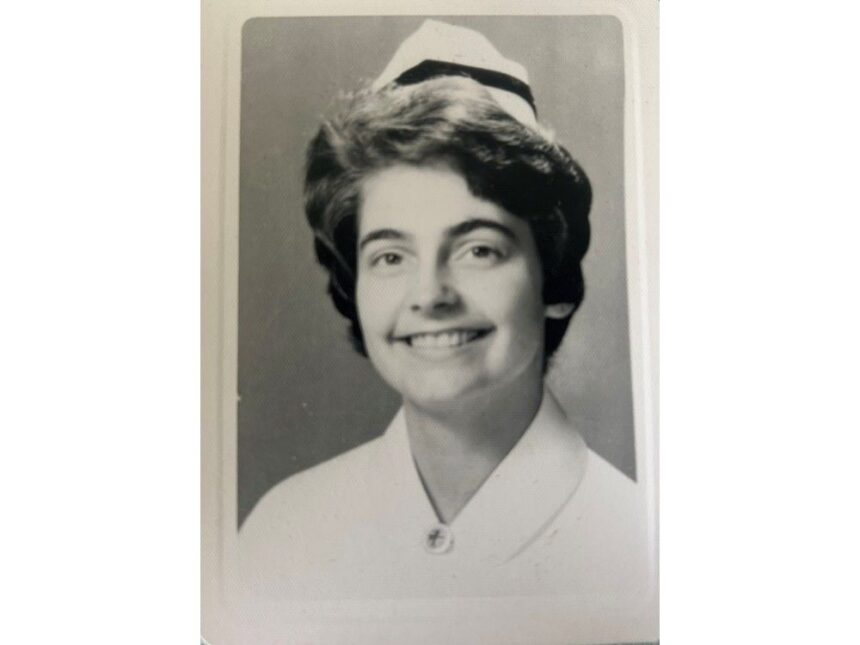‘There was a lot of research going on and a lot of education’Published May 06, 2025 • 6 minute readShown is Evelyn Schaller’s Victoria General Hospital School of Nursing graduation photo from 1964.From the first open-heart surgeries to the first chemotherapy treatments in Nova Scotia, Evelyn Schaller wasn’t just a witness to local medical history, she was a part of it.Milestone after milestone, Schaller’s nursing career weaves throughout some of our province’s most groundbreaking medical advancements. Something she still is an integral part of today as a QEII Foundation supporter, as the QEII Health Sciences Centre continues to boldly lead the way in advancing technology and care for Atlantic Canadians.THIS CONTENT IS RESERVED FOR SUBSCRIBERS ONLY.Subscribe now to access this story and more:Unlimited access to the website and appExclusive access to premium content, newsletters and podcastsFull access to the e-Edition app, an electronic replica of the print edition that you can share, download and comment onEnjoy insights and behind-the-scenes analysis from our award-winning journalistsSupport local journalists and the next generation of journalistsSUBSCRIBE TO UNLOCK MORE ARTICLES.Subscribe or sign in to your account to continue your reading experience.Unlimited access to the website and appExclusive access to premium content, newsletters and podcastsFull access to the e-Edition app, an electronic replica of the print edition that you can share, download and comment onEnjoy insights and behind-the-scenes analysis from our award-winning journalistsSupport local journalists and the next generation of journalistsRegister to unlock more articles.Create an account or sign in to continue your reading experience.Access additional stories every monthShare your thoughts and join the conversation in our commenting communityGet email updates from your favourite authorsSign In or Create an AccountorArticle contentRead More Cape Breton VON adds nurse prescribers to client care St. Rita’s nursing school grads reflect on studies, careers and friendships at Cape Breton reunion In honour of International Nurses Day 2025, we’re chronicling Schaller’s involvement in Atlantic Canadian health care, from her days nursing at the Victoria General Hospital, now known as the QEII’s VG Building, to her continued support of the QEII Foundation today.CURIOSITY AND CAREAfter graduating from the Victoria General Hospital School of Nursing in Halifax in 1964, Schaller set off on a journey that would span 46 years and take her around the world.Schaller first started her career as a staff nurse on a medical unit at the VG. Soon after, she moved to an Intensive Care Unit (ICU) in Sarnia, Ont., at a time when Nova Scotia had yet to establish such units. Schaller persevered and quickly adapted to the role. When she later returned home to Halifax, she joined a brand-new team in cardiac recovery at the VG, helping to care for patients undergoing Nova Scotia’s first open-heart surgeries.Article content“There were three of us nurses, and we worked around the clock with the patients,” she recalls. “It was really fascinating to be in on that.” Evelyn Schaller (bottom left) is shown with her nursing unit at the Victoria General Hospital in the mid-1970s. During this time, Schaller worked as the unit’s head nurse.After relocating to London, England, Evelyn worked in plastics, burns, and oral surgery operating theatres that played a vital role supporting a 48-bed burn unit and wards treating various patient’s needs.When she once again returned to Nova Scotia, Schaller brought along with her the international experience she gained in burn care. While pursuing her bachelor of nursing degree at Dalhousie University, she balanced her studies with casual and part-time roles in the VG’s burn unit, emergency department and coronary care unit.Over the years, Schaller advanced through roles at the VG, from surgical nursing to critical care, eventually stepping into some of the highest nursing leadership positions.Along the way, she also earned her master’s degree from Dalhousie, supported with a bursary from the VG.Article contentShe notes that some of her busiest – and most interesting – roles at the VG were when she served as director of surgical nursing and later director of critical care nursing, overseeing recovery rooms, emergency departments, five ICUs and even psychiatry.“It was fascinating,” she says of her time at the VG. “There was a lot of research going on and a lot of education.“I was there when we did the hospital’s first kidney transplant, the first liver transplant, and the beginning of open-heart surgery. I was there for a lot of firsts. It was an exciting place to work at the forefront of medicine.”As for other firsts, Schaller recalls working during the HIV crisis before the disease was first identified. She also witnessed the VG’s first chemotherapy treatments, before modern technology introduced pumps to circulate the medication.“We didn’t have pumps, so we hung the bag of medicine two floors up on the stairwell so that the drug could go into that patient,” she explains.Article contentSchaller expresses she was always keenly interested in innovation and advancements happening at the VG, which became part of the QEII Health Sciences Centre in 1994.“I remember a couple of the surgical residents taking me to see a research project. They were working on designing some of our first dialysis units,” she says.Experience at the VG inspired Schaller ’s lifelong curiosity and desire to keep on learning and striving for better.“It made you want to do your very best,” she explains. Schaller also shined during major milestones for nurses at the VG, including becoming the first president of the VG Staff Association – later known as the VG Nurses Union. Her leadership left an indelible mark on the QEII and beyond, including other roles in nursing in Cape Breton, Liverpool, New Brunswick, and with the P.E.I. government as a health-care consultant.“I always figured if I was a grad from the VG, I could do anything,” she says proudly. “They gave me confidence.”Article content Evelyn Schaller is shown during a 2024 trip to Boston.CONTINUING A LEGACYCurrently, Schaller lives in Sydney Forks. Though she’s retired from nursing since 2009, her days are anything but quiet. She belongs to a lively book club and is deeply involved with her local church.She’s a proud member of the Sydney Sunrise Rotary and a dedicated friend to those in her neighborhood.When she’s not at home, you’ll likely find her at her family cottage between Wallace and Pugwash or planning her next travel adventure, a passion she’s had since she was 16 years old.“I’m a fairly active senior,” Schaller says with a laugh. “I never seem to be bored.”Even in retirement, Schaller’s connection to the QEII remains strong. After serving six years on the board of Partners for Care, a non-profit supporting the QEII Health Sciences Centre, Schaller became a QEII Foundation donor herself.Today, she supports QEII Foundation priorities such as Transportable MRIs, an innovative solution outside of hospital walls bringing diagnostic care to communities faster, and is now interested in the patient engagement app in cancer care, a digital platform that aims to connect cancer patients directly with their care teams.Article content“I felt it was time to give back,” she says, explaining that she too once received care at the QEII.“I benefited from the QEII, and I saw how it benefited others across the province.”Schaller is most interested in supporting priorities that offer smart solutions to current health-care issues to benefit Nova Scotians.“I keep a close eye on what the QEII Foundation is putting forward,” she says.“Things like the transportable MRIs I felt would be beneficial to so many people in smaller communities, because the waitlists can be so long.”As a seasoned health-care leader, she knows the value of responsible, meaningful giving.“I want my donation to truly support care and innovation,” she says.She is also a strong believer in monthly giving, a simple way to give back that fits into her busy life.“At my age, I deserve easy,” she laughs.FOR THE FUTURELooking back on her career, Schaller reflects on how nursing has evolved. She hopes that those currently pursuing nursing can balance new innovations with a kind approach, believing in care that’s both compassionate and cutting-edge.Article content“Things have changed in nursing. We’ve come a long way with treatment. Way, way back, nursing used to be a lot of soothing fevers, giving back rubs, and hand holding,” she says.Schaller explains that innovation has transformed today’s field of nursing. Care teams can now intervene with an array of life-saving medications and treatments, from antibiotics to advanced wound care and beyond.“Of course, we need technical skills in nursing. It’s crucial that someone doesn’t miss a drug dose, dressing change or whatever else they need,” Schaller says.“But it’s important to remember that patients still benefit from someone who talks soothingly to them and who holds their hand.”Schaller also expresses why it’s so important for our community to support local hospitals, like the QEII Health Sciences Centre.“Hospitals see what the community needs. They’re positioned to push boundaries and bring in what’s required. Without their fundraising and innovation, many essential services just wouldn’t happen.”Just as Schaller stood beside patients during so many medical firsts throughout the decades, she’s still standing with them today, helping make new QEII firsts possible as a QEII Foundation donor.May 12 is International Nurses Day and Nurses Week runs from May 6-12.Sarah Marshall works at the QEII Foundation as a writer.Article content
Retired Cape Breton-born nurse had a career filled with firsts










